Why Invest in Fusion Energy
Imagine a future where electricity is almost free, limitless and accessible to everyone. Imagine that the atmosphere is clean, the ozone layer has recovered and global temperatures have stabilized.
Imagine that production factories are a safe place to work in and provide power for your nearby power-independent community.
Then imagine your grandkids expression when you tell them that people used to fight for oil.
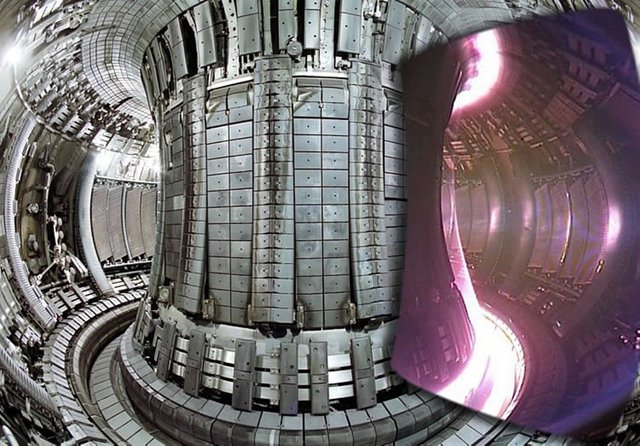
image credit
Addressing the issue
Technological growth nowadays is growing exponentially and so is global population. Sadly, we will soon be unable to satisfy the ever increasing demands in power consumption, let alone maintain environmental sustainability. Fossil fuels are running out and although renewable energy sources such as hydroelectric, wind power and biofuels are a great alternative, their net power production is relatively limited and consumption needs cannot be satisfied solely by them.
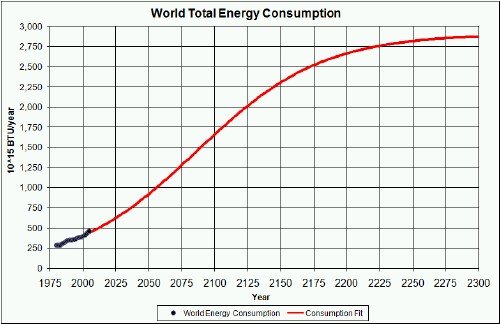
image credit
Enter nuclear fusion
Solar power and improved nuclear fission (the ‘classic’ nuclear energy) are considered to be the most reliable allies in our race against time; however there is a third, even more promising, groundbreaking idea called nuclear fusion. It is in many respects the perfect energy source.The inspiration for both solar power and nuclear fusion came from observing the sun, the largest life-giving, most energetic object in our solar system. Solar power harnesses its energy; nuclear fusion replicates its process.
Fusion is the process that powers our sun and the stars. This is how stars form: In outer space, hydrogen clouds are brought together by the gravity of their masses. These strong gravitational forces cause the hydrogen atoms to move at a very high speed, collide with one another and merge to form helium, the second most abundant element in the universe. The action of fusing together releases tremendous amounts of energy in the process, transmitted as heat and light. A young star is born.
Could we replicate… a small sun on earth?
On earth, fusion is significantly harder to achieve. Without the massive gravitational forces of the sun the only way to accomplish it is by reaching extremely hot temperatures. We have found that two variants of hydrogen (the proper term is “isotopes”), called deuterium and tritium, are the most efficient in producing energy at the lowest possible temperatures when they fuse. However, their fusion still requires temperatures of around 150,000,000 C° to take place!
How does it work?
The atomic nucleus contains positively charged protons, and because particles carrying the same charges repel each other, the electrostatic repulsion between them normally prevents fusion from occurring. If this barrier is overcome then the strong nuclear force takes over and fuses the nuclei together, releasing energy. This can be achieved at extreme temperatures, in which electrons are separated from their nuclei and the hot gas turns into a fourth state of matter called plasma - an electrically charged gas.
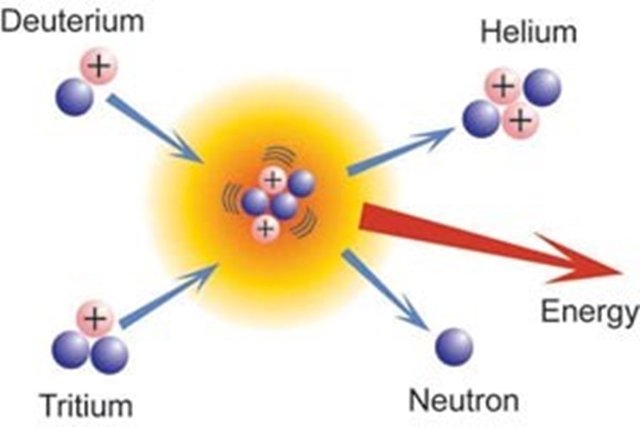
image credit
The developers
ITER, an international collaboration of 35 nations, is the project currently building the world's largest experimental nuclear fusion reactor. ITER tries to achieve the reaction with the help of an innovative magnetic device called a tokamak. The device uses powerful magnetic fields to contain and control the hot plasma. The fusion between a deuterium and a tritium produces one helium nucleus, one free neutron, and lots of energy! The free neutrons absorb about 80% of the energy produced, and because they carry no electrical charge, they cannot be contained by the magnetic fields inside the tokamak and get absorbed by the surrounding wall blankets in the form of heat. This heat is planned to be used to produce steam which in turn will produce electricity.
There are several more types of fusion reactor devices developed by research teams around the world. As opposed to the magnetic confinement fusion mentioned above, inertial confinement fusion attempts to initiate nuclear fusion reactions by heating and compressing the fuel with the use of lasers. The largest experiment of this type is the National Ignition Facility in the US, although a similar large-scale device, Laser Megajoule, is being prepared in France as well.
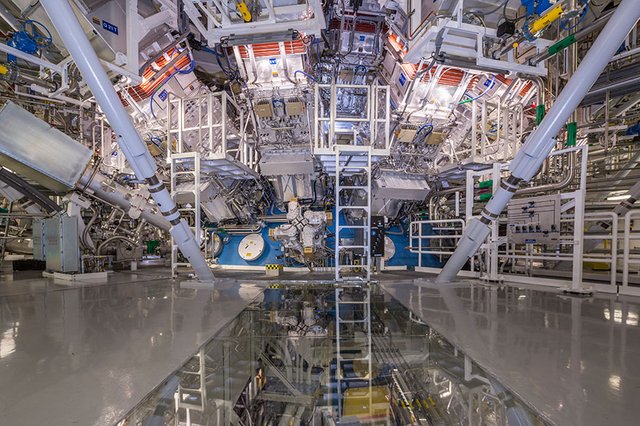
image credit
Fusion vs Fission
Nuclear fusion is not to be confused with nuclear fission, the method currently used in nuclear reactors all around the world. Fusion works by merging light atoms; fission works by splitting heavy ones. Fusion produces about four times more energy than nuclear fission. It is also much safer since it cannot cause a chain reaction leading to meltdown accidents like in Chernobyl or Fukushima. Any alteration in its conditions will cause the plasma to cool within seconds and the reaction to stop. Furthermore, fusion does not employ fissile materials like uranium and plutonium that could be exploited to make nuclear weapons.
What are the advantages of using nuclear fusion energy?
Fusion can provide unlimited, clean and sustainable energy for millions of years to come. The fuels can be easily found in nature, mainly in water and lithium. There are abundant reserves of lithium to mine on earth for the first thousand years, and it can be later extracted from ocean water.
An immense amount of energy can be produced with very little fuel, rendering it extremely economical. It is estimated that only 400 kg of hydrogen isotopes will be enough to power 1 million people for an entire year! For a comparison, the lithium in one laptop battery combined with half a bath of water would produce the same amount of electricity as 40 tonnes of coal.
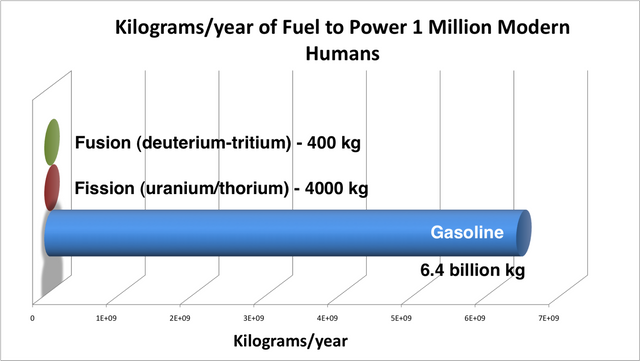
image credit
The nearly inexhaustible fuels mean that the monopoly of fossil fuels and the wars over them will soon be well in the past. Any community can be energy-independent, which translates to financial and social independence as well, without the need of central providers. Raw material suppliers will be appointed exclusively by healthy competition. The economy will become decentralized.
What’s more, fusion emits no CO2, no pollution, no greenhouse gases. Its fuels are safe hydrogen isotopes and its main by-product is helium, an inert and non-toxic gas. Reactors produce no high activity, long-lived radioactive waste, and waste itself can be recycled within a hundred years. It is as clean as it can get.
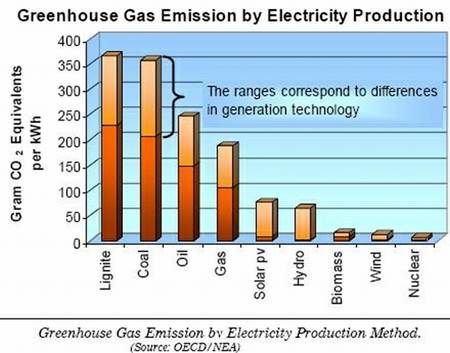
image credit
Research funding needs
Building a fusion reactor is costly as the project is still at the experimental stage and there are several technical issues to be addressed. Advanced research is required for the development of smart and innovative technologies for plasma confinement and energy extraction, such as regulated magnetic fields and smart wall blankets that will be able to capture the energy produced as well as recycle part of the fuel. All materials employed have to be especially designed to withstand extreme temperature conditions and high thermo-mechanical stresses.
But it’s worth it. Any investment on fusion technology now will return unimaginable earnings. The transition is bound to happen, as even fossil fuel companies realize that their sources will not be viable for much longer and have already begun investing in alternatives. Fusion is the most promising technology for actually solving the energy problem. Its implementation will make every nation and community energy-independent, and that fact alone is a global game-changer.
@elemenya
Hello elemenya, we would like to inform you that you have been chosen as a featured author by the @robinhoodwhale initiave. We are currently in alpha testing, if you would like more info join robinhood chat on steemit.chat or pm @repholder.
Interesting - Keep on Steeming!
Thank you @robinhoodwhale! I will join the chat :)
Very thorough analysis @elemenya . Keep them coming. We need more science based articles in Steemit
Thank you @kyriacos.
very good post !
@elemenya, what do you think of the LENR debate?
http://www.popularmechanics.com/science/energy/a20874/us-house-cold-fusion/
https://animpossibleinvention.com/2016/03/07/finally-this-is-possibly-how-the-e-cat-works/
http://lenr-canr.org
This post has been linked to from another place on Steem.
Real-Time Update of RobinHood Whale Project 罗宾鲸火贴实时更新 25-08
Real-Time Update of RobinHood Whale Project 罗宾鲸火贴实时更新 26-08
Steemit Science & Technology Digest #2
Real-Time Update of RobinHood Whale Project 罗宾鲸火贴实时更新 27-08
About linkback_bot
Fusion is awesome but the fact is that the sun is on a convergence path with the technology. Why not just let the sun do the work or alternatively find a way to convert the fusion reaction into light and harvest with photovoltaic cells? The formation of francium is a kind of fusion and puts off a lot of radiation. How to convert it to light though may be impossible, right?